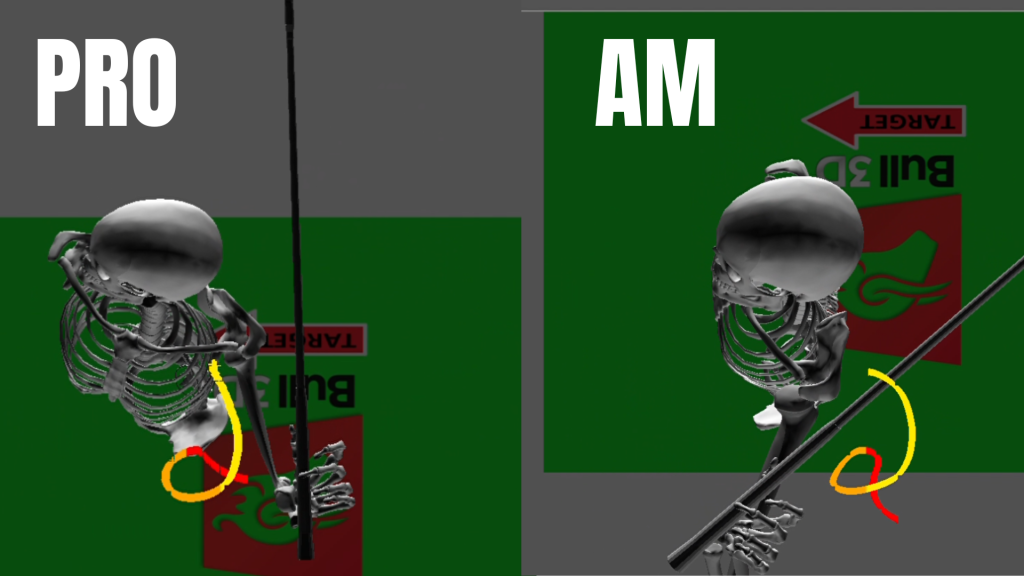In this short blog, I am going to address a common issue I observe among golfers during my coaching sessions and on the range – the challenge they face with pelvis movement.
The movement of the pelvis in a golf swing is a crucial indicator of how effectively the golf club will traverse throughout the swing. By understanding the pelvis’s position at impact through 3D motion capture, we gain insights into its spatial dynamics.
This issue can be broken down into three prevalent flaws: pivoting, backswing, and impact. Often, a player’s adaptation stems from a poor pivot during the backswing.
Let’s delve into one of the most common issues I’ve mentioned – pivot.
A poor pivot is frequently a result of a lack of comprehension about what pivot entails. Consider a player in 3D motion capture from a bird’s eye view of their pelvis. You’ll notice a red line originating from the back of their tailbone, tracking its movement during the backswing, followed by an orange line for the downswing and a yellow line for the follow-through.
Now, let’s compare this to a PGA tour player’s movement.
Can you spot any differences?

With the less proficient player, the red line moves towards the ball, then shifts backward and towards the target. This forces the player to make adjustments, and you’ll observe the yellow line moving away from the target. This is a common issue I encounter in players struggling with their pivot.
Contrastingly, observe the PGA tour players – their red line moves towards the target at a 45-degree angle during the backswing, then shifts back away from the ball. Crucially, the player shifts back towards the target before completing the backswing, evident in the red line moving straight towards the target. This signifies an excellent pivot, often seen in the best ball strikes.
To enhance your pivot, consider this fantastic drill showcased in the video. Notice how well I load into the trail side, and my pelvis moves towards the target before completing the backswing – a key element for a successful pelvis re-entry in the downswing.
Feel free to leave any questions or comments below.



0 Comments